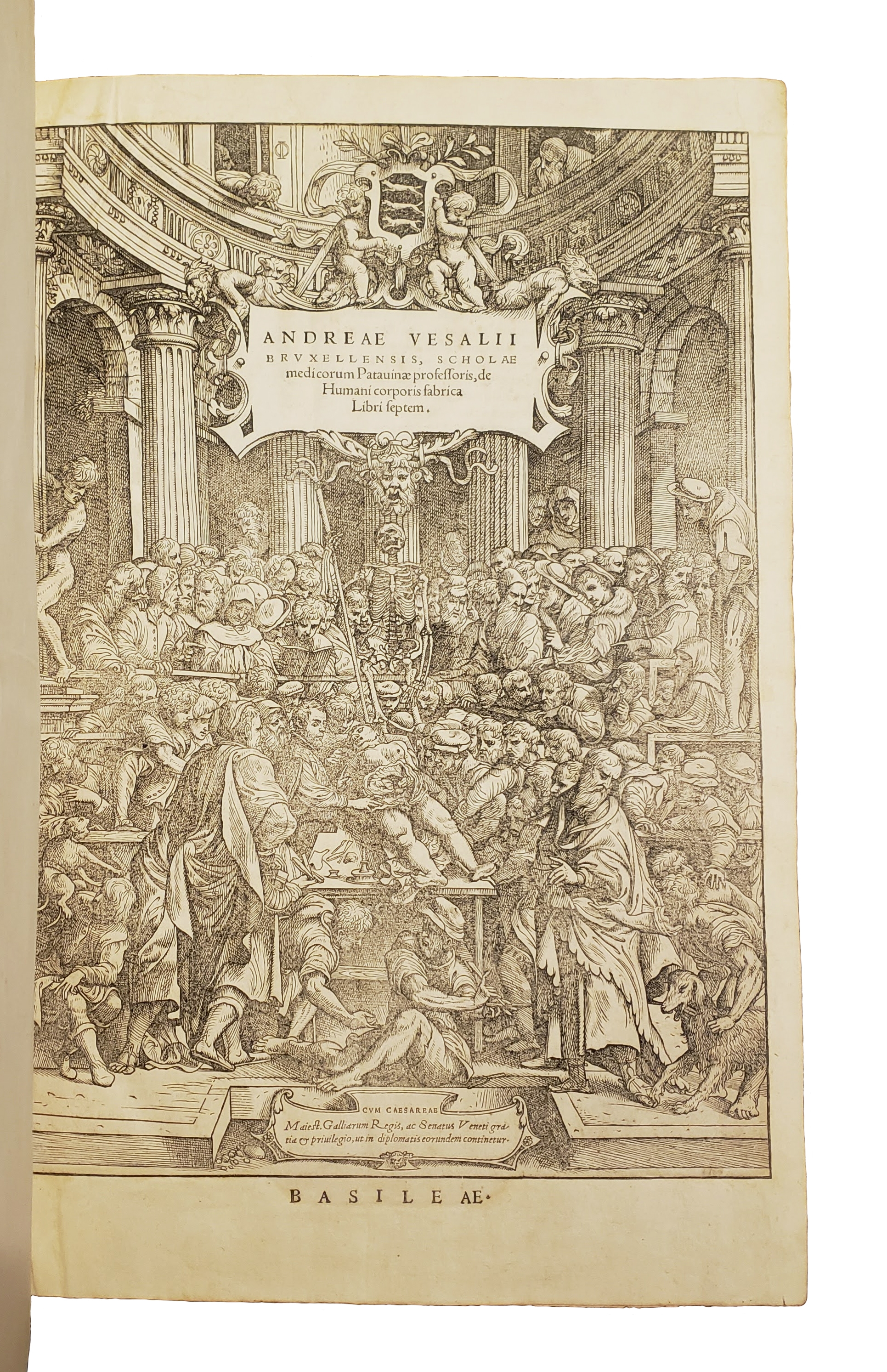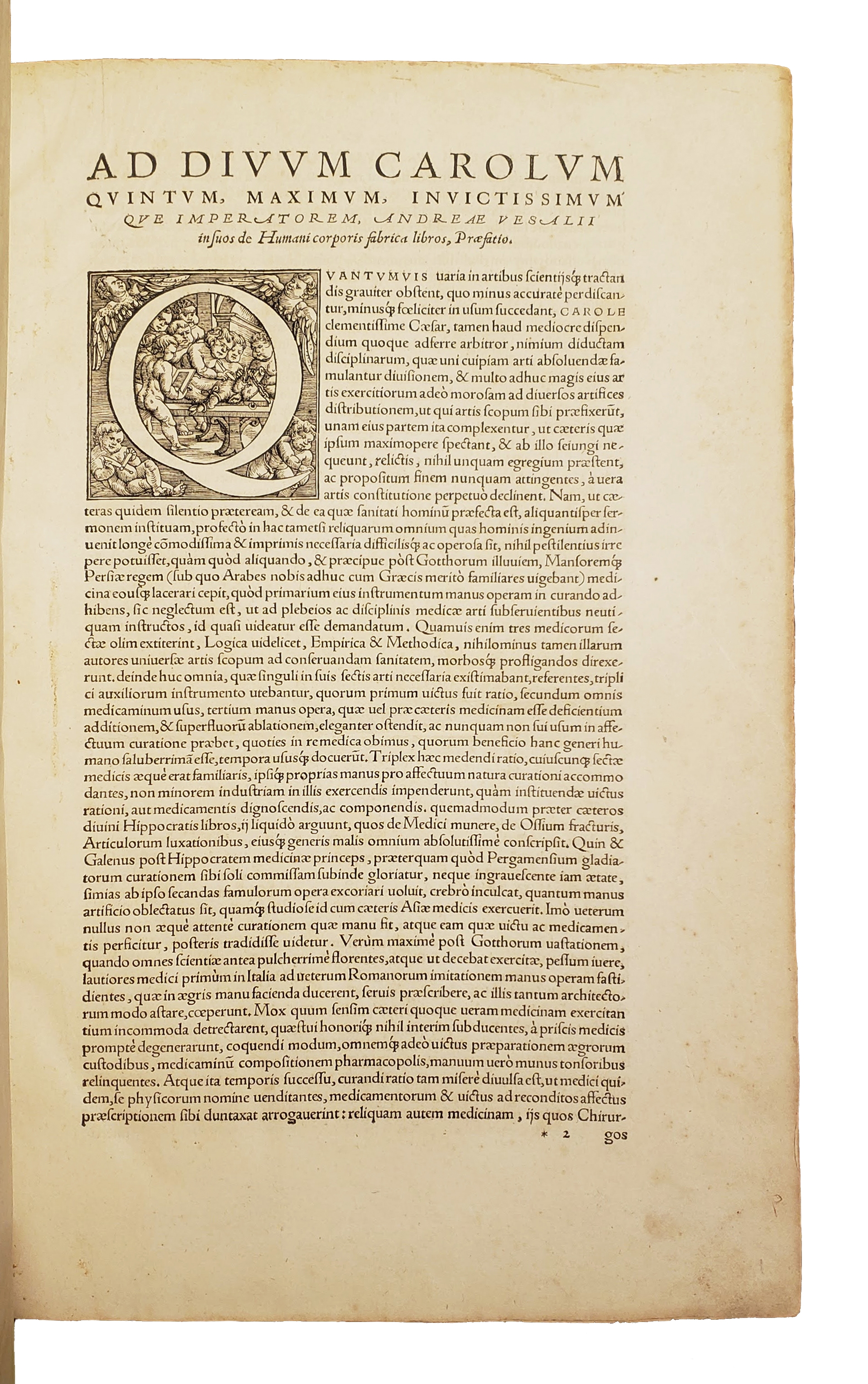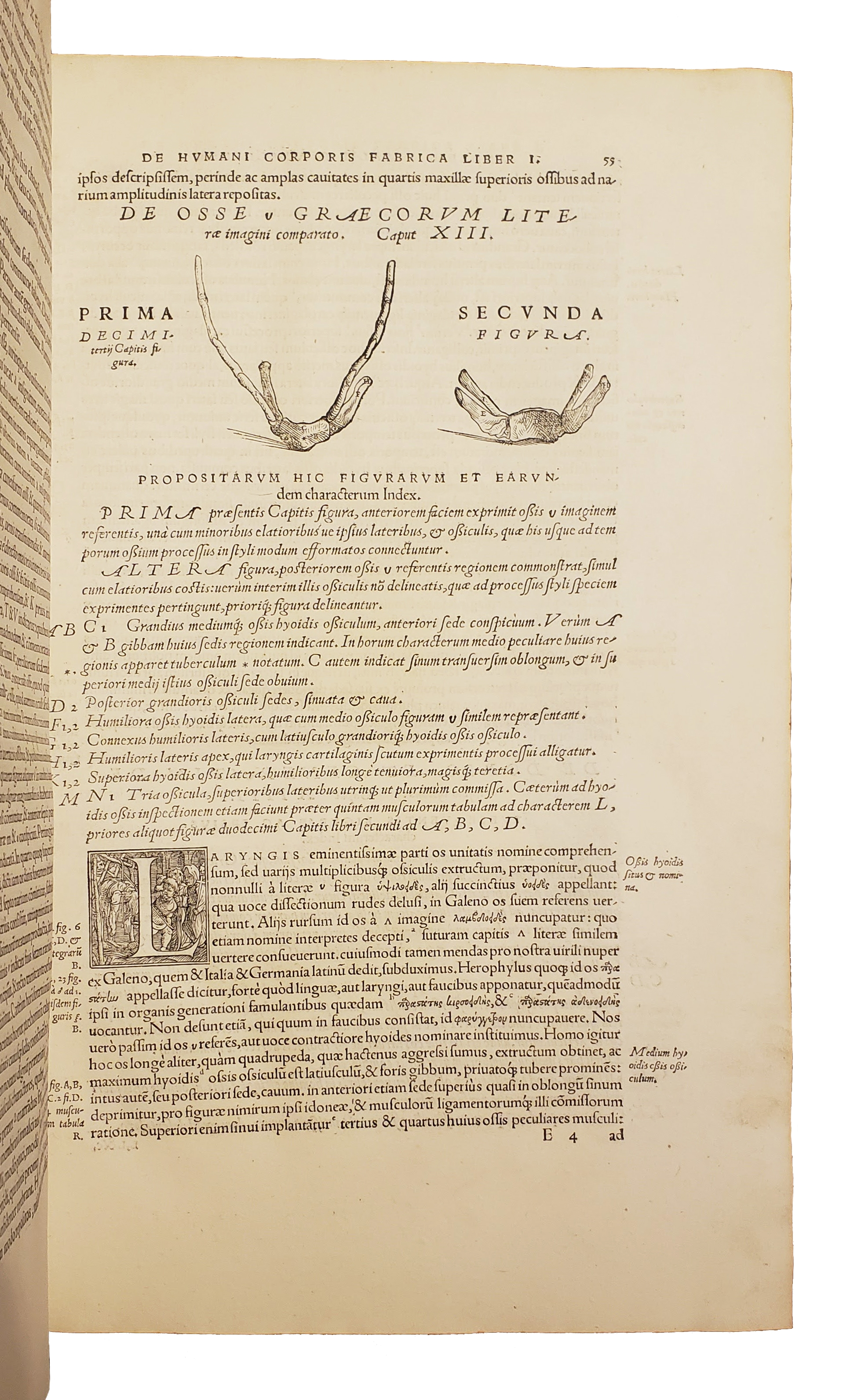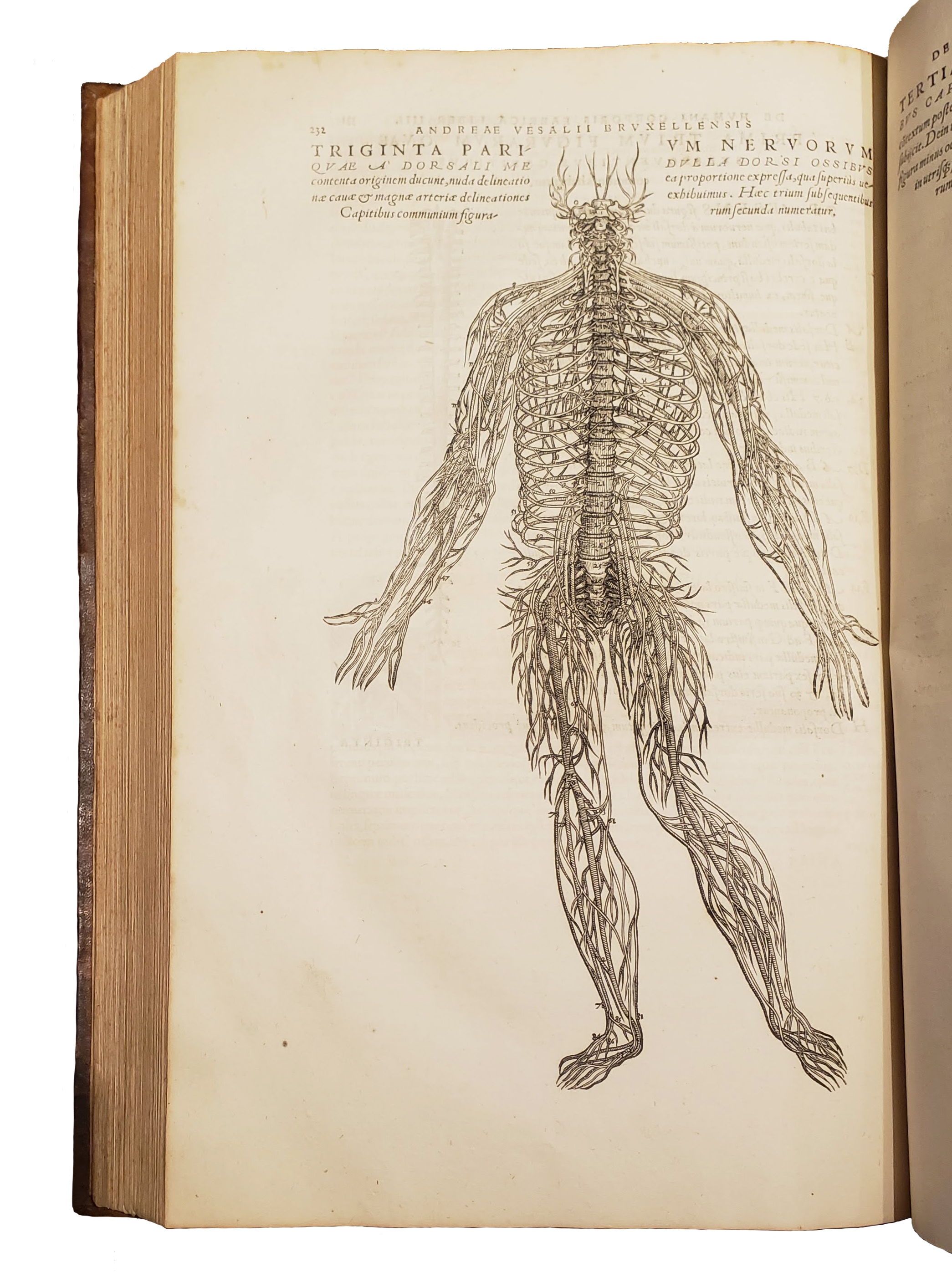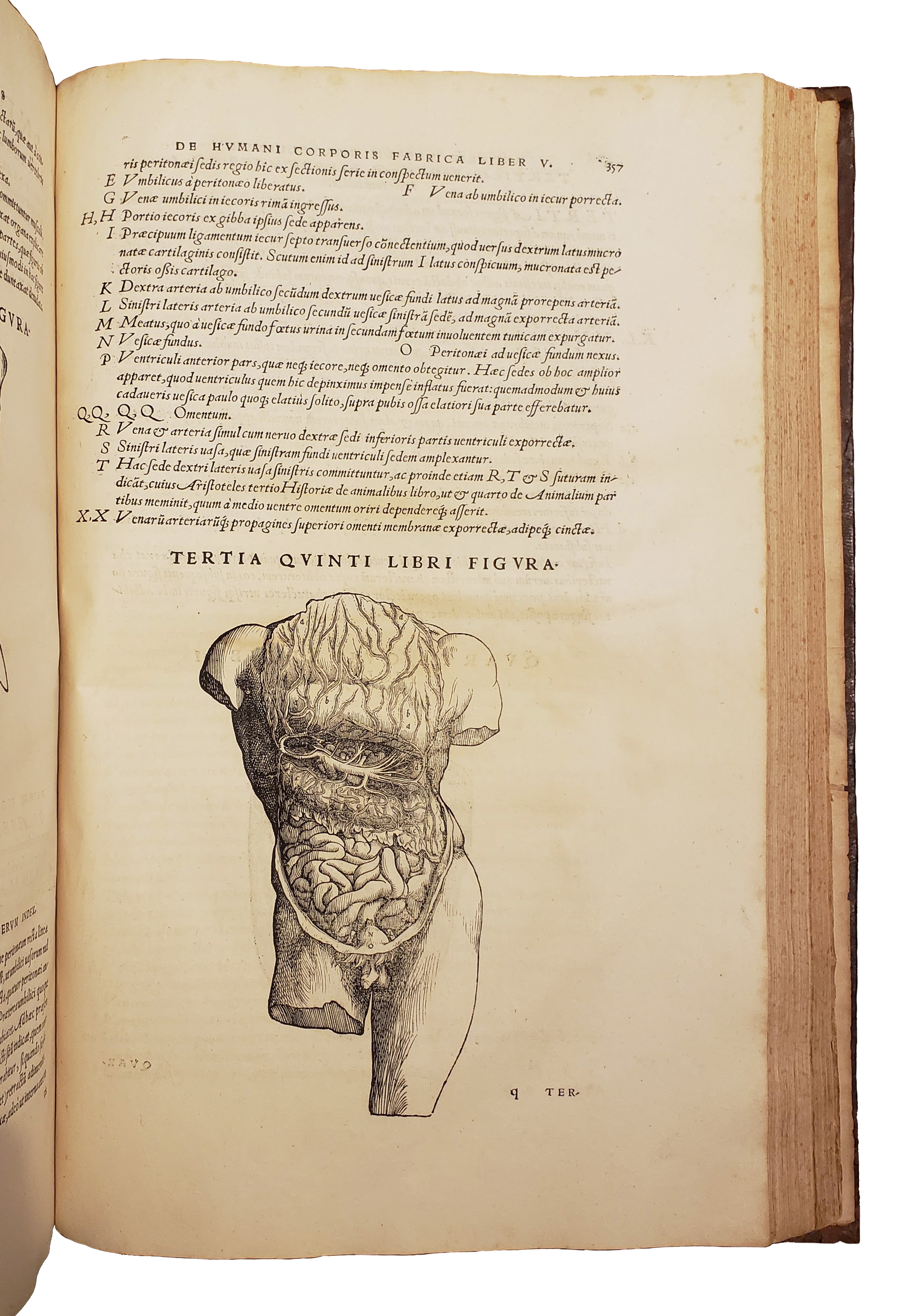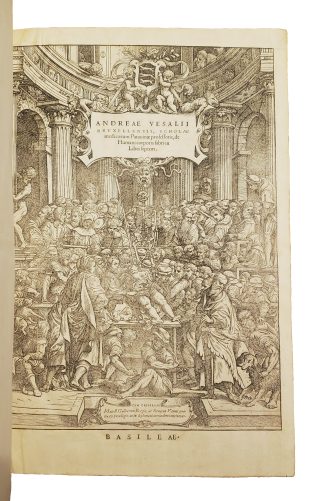VESALIUS, Andreas.
THE FIRST AND GREATEST MODERN ANATOMY
De Humani Corporis Fabrica Libri Septem.
Basel, ex off. Joannis Oporini, 1543£350,000.00
FIRST EDITION, large folio 41.5x27cm (max), pp (xii) 659 (recte 663) (xxxvii) Roman and Italic letter, remarkable and highly detailed woodcut to t-p depicting Vesalius in a classical dissecting theatre with opened female cadaver surrounded by a large crowd of physicians, students and casual onlookers. Handsome full page portrait of the author age 28 preceding text, some 200 woodcuts of the human anatomy including 2 double page and 21 magnificent full page illustrations of the skeletal, muscular, vascular, and nervous systems and a further 200 large historiated initials depicting the arts of surgery, dissection and obstetrics. T-p substantially but almost imperceptibly remargined, final colophon leaf a bit creased due to ancient repair in blank. Two ll. reinforced at gutter. Light yellowing in places, a little more pronounced in first and final gathering, the odd minor marginal water stain to a few ll., slight foxing to some outer margins, small hole to *4 verso with loss of one letter, the occasional spot. A very good, well margined copy of this immensely practical and much used work in C17 panelled sheep, rebacked, spine remounted, abrasions to cover but very sound, edges sprinkled red. Bookplates of Norman Haskell and Arthur Lyons, in fleece lined morrocco folding box, some wear at edges.
“It cannot be denied that the Fabrica is the most famous anatomical work ever published, to this day one of the most beautiful in existence and the milestone in all medical history which definitely showed a fresh break from the old traditions”. Heirs of Hippocrates 172.
The De Humani Corporis (Fabrica) is an extraordinarily complete anatomical and physiological study of every part of the human body, based on Vesalius’ first hand examinations and five years’ experience as the public prosector in the medical school at Padua. The five books deal with the bones, muscles, blood vessels, nerves, abdominal viscera, thoracic organs and brain. Although Vesalius’ study of medicine began just after Galen’s anatomical work was becoming known, Vesalius did not just improve it, he superseded it. Subsequently the history of anatomy has been divided into two periods, pre-Vesalius and post-Vesalius.
“The Fabrica, a handsomely printed folio, as remarkable for its series of magnificent plates which set new technical standards of anatomical illustrations and indeed book illustration in general. They have generally been ascribed to an artist of Titian’s school… Vesalius was the most splendid and most comprehensive of a large number of anatomical treatises of the sixteenth century…. No other work equals it…. It was translated, reissued, copied and plagiarised over and over again and its illustrations were used or copied in other medical works until the end of the eighteenth century.” Printing and the Mind of Man 71.
The stunning blocks for this Basel edition were long attributed to Titian’s pupil, Jan Stephan van Calcar (Mortimer, Harvard C16 IV.It.p733) though this is now disputed, but they were cut at Venice and sent by Vesalius to Oporinus with instructions for printing. “They are famous for their beauty, accuracy and lavishness of detail and number” (Heirs of Hippocrates 172). However more important than their anatomical information was the scientific principle they contained which was fundamental to anatomical research and has remained so. With the publication of the Fabrica all major investigators of anatomy were compelled to recognise that attempts to project the anatomy of animals on the human body (the basis of Galenic anatomy) were flawed and the only true source of human anatomical knowledge was the dissection and observation of the human body.
“It cannot be emphasised too often that this was an epochal book…. the first edition of the Fabrica is the heart of any medical library.” (Heirs of Hippocrates 172)
“The founder of modern anatomy… His work is described and illustrated in this epochal publication, one of the most beautiful scientific books ever printed.” Horblit 98
“By this epoch-making work Vesalius the ‘Father of Modern Anatomy’ prepared the way for the rebirth of physiology by Harvey and for independent observation in anatomy and clinical medicine. The publication of this book was the greatest event in medical history since Galen.” Garrison. Morton 375
Choulant - Frank p169 et seq. Cushing V 76 Cushing Vesalius VI A-I. Osler 567 \\\\\\\"the first modern work of a creator\\\\\\\". Printing and the Mind of Man 71.In stock


